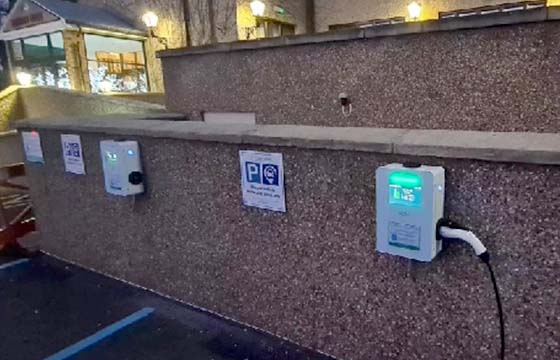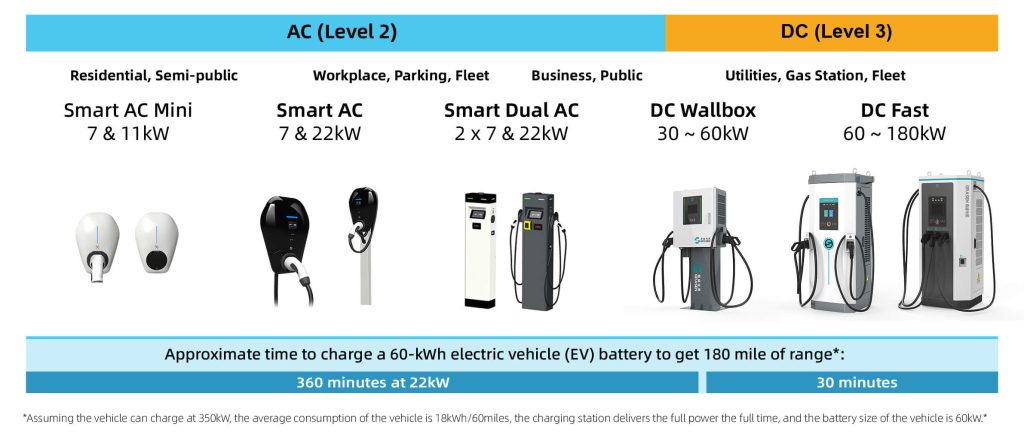Time:
As electric vehicles (EVs) become more prevalent on the road, one of the main concerns of EV drivers remains the time it takes to recharge their vehicles. Therefore, the demand for fast-charging solutions continues to increase. However, the truth is not every location needs a DC fast charging station (or can afford the price tag). The good news is that high-speed AC charging is becoming increasingly accessible, providing a solution to this issue.

Every car charges a little differently. The charging speed is affected by many factors such as SoC, EV charger's output power, and vehicle current & voltage limits. Below is a brief calculation showing the charging time of AC chargers with different output power, assuming the consumption is 17kWh/100Km.
| Charger | Phases | Consumption | Distance | Time |
| 3,7 kW | Single | 17 kWh | 100 Km | ~ 4,6 h |
| 7 kW | Single | 17 kWh | 100 Km | ~ 2,4 h |
| 11 KW | Three | 17 kWh | 100 Km | ~ 1,5 h |
| 22 kW | Three | 17 kWh | 100 Km | ~ 0,8 h |
Imagine you are the owner of a retail or restaurant, and your customers will likely stay for 2 to 3 hours. If you want to stand out from the crowd and differentiate yourself by offering EV charging as part of your service, 11kW or 22kW AC charging will obviously be a better choice than the other two. In the situation that you might not have the proper infrastructure or budget to install a DC charging station.
The advantages of high-speed AC charging include not only quicker charging times but also increased convenience and accessibility.
You may also like to know:
5 Factors that Affect the EV Charging Speed
Not all projects require high-speed charging. Many locations have sufficient dwell time for slow charging. For instance, when staying overnight at a hotel or working for 8 hours, drivers have ample time for their vehicles to charge at a slow rate. Therefore, it is necessary to determine whether it is worth increasing the charging speed available. To answer that, it is crucial to know where the EV charger will be installed.
First of all, assess the probability of drivers staying for an extended period, for instance, at locations such as a shopping mall, residential building, library, or hotel. Grasen's Level 2 EV charger and dual EV charger are perfect in these places.
However, in other high-traffic areas such as highway service stations, or commercial charging stations, a faster charging solution would be required, Grasen's DC fast charging solution with 15 to 60 minutes of charging time would be the more suitable one.

In conclusion, high-speed AC charging is providing faster and more convenient charging options for drivers. While there are still some challenges to overcome, the benefits of high-speed AC charging are clear, paving the way for a future of more sustainable transport.
Submit Request